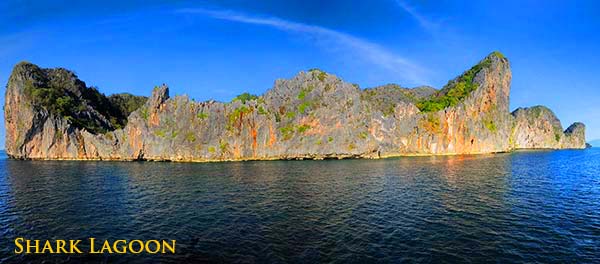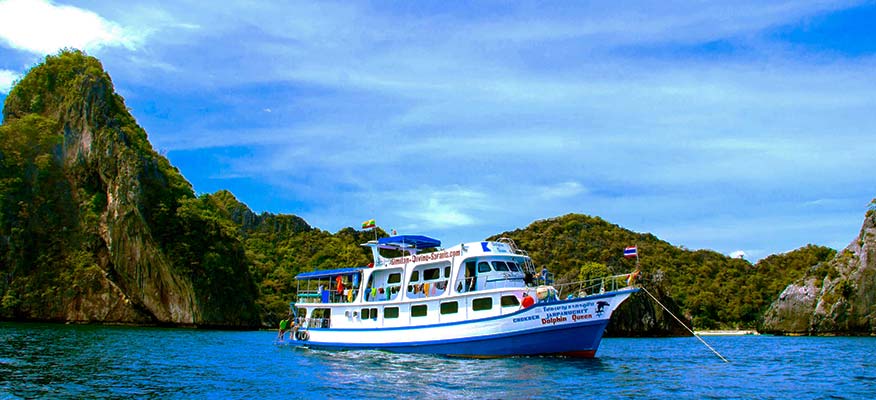About the Mergui Archipelago
The Mergui Archipelago is known historically as the area west of the Tenasserim Hills, the southernmost part of the Himalayan Range. This range runs the border with Thailand. Once part of the Kingdom of Siam, it came under British rule in the 19th Century and since WW2 it has been part of the independent country of Myanmar. (You can call it Burma. These names are interchangeable).
Myanmar information
The Tanintharyi Region or the Mergui Archipelago (Myeik) is some 1,600 kilometers long and contains hundreds of islands, rocks and pinnacles. It is a paradise for divers and yachtsmen and one of the last under populated tropical archipelagos in the world.
The Mergui Archipelago as we know it today stretches between the southern Burmese towns of Kawthaung (Victoria Point) and Myeik Township (Mergui).
Kawthaung is our jumping off point for boats and yachts to explore the islands. Most diving and sailing itineraries do not go as far as Mergui as it’s more than 200 nautical miles between the two.
The best way to explore and dive Mergui is by liveaboard boat. Yes, there are small resorts open and more planning to open, but the distances are just too great to get people from point A to point B efficiently and easily.
No, it’s much better to climb aboard a comfortable Liveaboard and go where you want, dive where you want, and sleep where you want. When you have hundreds and hundreds of islands, why visit just one?
The waters are calm and warm (~28ºC year-round.) Visibility varies from average to excellent and you will find abundant marine life inshore and offshore. We dive both for variety. The offshore areas offer good visibility, what you would expect from a tropical dive. But the inshore areas have nutrient-rich water and thus explode with marine life. It is one of the most biodiverse areas in the Indian Ocean if not the world.
You will see marine life in the Mergui Archipelago that you will see nowhere else.
A Brief History of Burma Diving
When the Similan Islands began getting “crowded” in the late 1980s, certain dive operators began looking at exploring new dive sites. Pouring over charts, we saw a vast area just north of our border which was called the Mergui Archipelago.
At that time, Burma was completely closed and under military rule making it almost impossible to visit the country, so that option was out. Around this time, GPS units became affordable so operators started looking at the offshore banks west of the Burmese archipelago.
We began diving the banks which are 90 miles from the Similan Islands and 70 miles from the Surin Islands, a long but manageable overnight trip. We would travel west out to sea and then turn north to get to the banks at day break, spending one or two days there and then return to Thailand. Little did the dive operators know that even though this area is in international waters (more than 12 nautical miles from land) Myanmar claimed it as her exclusive economic zone (more than 200 nautical miles from land).
Eventually the government contacted us and asked the reason we were visiting these banks, thinking that maybe we were fishing or worse, salvaging shipwrecks. We assured them were doing neither, but since the boats were benefiting economically, the Myanmar Government asked us to the capital to discuss formal permissions, and we began some heavily supervised exploration of the Mergui Archipelago.
Due to assumed security concerns, army and naval escort was required with a flotilla of boats. The poor soldiers became very seasick. After three years of negotiations during which time we were not allowed to dive at the Burma Banks, an agreement was struck for a proper entry system by boat into the country.
And to our surprise, we were also given permission to visit the many inshore islands, a real surprise if you remember how tightly closed Myanmar was at that time. We were overjoyed as this effectively multiplied our diving area by a factor of 500.
Now we may dive where we like, but we must make a formal check in at Kawthaung. There is no more sneaking across international borders to dive the Burma Banks. The agreement is a win-win situation for all parties as Burma began to have a marine and boating industry, and divers are allowed to visit an area that has been effectively closed since World War 2.
Composed and written by John B. Williams.

